We know, doing the laundry is not exactly the most enjoyable thing in the world. Most people go to the laundry shop to solve this issue – but it makes another issue of its own: it’s too dang expensive. This is why buying a washing machine can save you more in the long run.
However, choosing the best washing machine model for you is not as simple as it seems; there are many factors to consider: what capacity should you get? In what configuration? Should you get an inverter or a non-inverter washer?
With all of these factors, it may get confusing to choose the right model for your needs. This is why I created this comprehensive yet concise washing machine buying guide to help you make an informed decision.
What is the proper washing machine capacity for your family?
Knowing the proper capacity for your washing machine will save you from doing another batch of laundry. Assuming that you do the laundry once a week, a quick rule of thumb is 3kg per person in your household will be a nice starting point.
[wpdatatable id=6]
You should add a few kilos to the capacity if your family goes through a lot of clothes throughout the day,. If you opt to do your washing more than once a week, subtract a few kilos. If you can, try to record the average weight of your typical batch of laundry so that you’ll have a benchmark before purchasing a new washing machine.
Tip: the capacity in kilograms refers to the clothes’ “dry weight”, not their “wet weight”.
Semi-automatic or fully automatic?
Washing machines can be divided into two categories: fully automatic and semi-automatic.
In a nutshell, a fully automatic washing machine will do most of the work for you. After you load your laundry, the washer will detect the weight of the load and then automatically puts the required amount of water for the load. Just set the proper wash cycle and then you’re good to go; it will even dry your clothes after the cycle!
Fully automatic washing machines are further classified based on the way their tubs are positioned: top-loading (vertical tub) and front-loading (horizontal tub). I’ve written a separate article if you want a fuller discussion comparing the features of front load vs. top load washers.
On the other hand, there is a lot more time-involvement in a semi-automatic washing machine because you’ll need to put the water and detergent yourself. There are no fancy wash cycles, and you’ll also have to set the wash timer yourself. If your unit has a spin dryer, you’ll have to manually transfer the wet clothes to the dryer basket as well.
Semi-automatic washing machines can be classified into two: single tub and twin tub. A single tub is the most basic washing machine you can get; it’s just one tub for washing your clothes. Meanwhile, a twin tub is basically just a single tub with a spin dryer attached at its side.
I have compared semi-automatics vs. fully automatic washer models in a separate article. Go check it out!
Will you go for an inverter or a non-inverter?
Simply put, an inverter is a device that controls the frequency of the incoming electrical current that goes to your washing machine’s motor which allows it to operate at variable speeds.
With this, an inverter washing machine can vary its motor speed to the most optimal level depending on the weight of the load that you’ve put in. This will allow the washing machine to use the least amount of power without sacrificing its cleaning performance.
Inverters are usually touted to reduce your electricity bill in the long run. However, washing machines do not consume much power to begin with. And with a hefty ₱5,000 – ₱7,000 addition to the price tag, is an inverter washing machine worth it? Read our hit piece on inverter washing machines here.
Types of Washing Machine
There are different types of washing machines available for different needs at different price points. The next section is a brief explanation of each type.
Single Tub
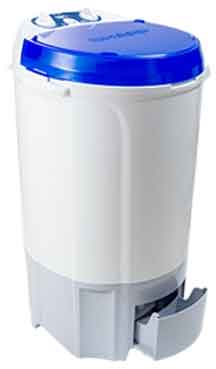
This is the most ubiquitous type of washing machine in the Philippines. Just one tub for washing, a few knobs, and a pulsator; this is as bare-bones as it can get.
It is inexpensive and cheap to operate. Don’t expect any advanced features though. Also, since it is a semi-automatic model, you’ll still have to do a lot of things manually – i.e. putting water and detergent, draining, and drying,
Pros:
- Inexpensive upfront
- Inexpensive to operate
- Light and easily relocatable
Cons:
- No dryer
- No advanced features
- A lot more time involvement
Twin Tub
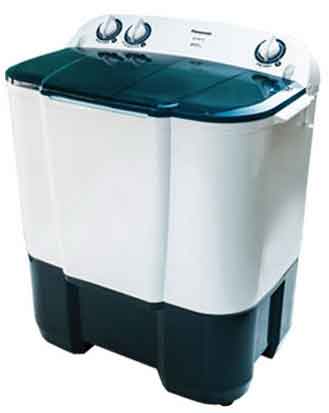
A twin tub washing machine is a step above the single tub; it’s basically a single tub but with a dryer tub attached to it. The features are still quite bare though.
The built-in spin dryer dramatically shortens the time it takes to dry your clothes. Keep in mind though that you still have to hang your clothes to dry them off completely.
Pros:
- Inexpensive upfront
- Inexpensive to operate
- Has a built-in spin dryer
Cons:
- Bulky
- No advanced features
- A lot more time involvement
Fully Automatic Top Load
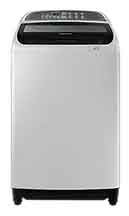
Because of competitive pricing, top load fully automatic washing machines are now an affordable luxury; just spend a few thousand pesos more than a twin tub model, then you’ll have something that will save you time and save you from inconvenience.
Fully automatic top loaders are equipped with fuzzy logic, this function detects the weight of the load then automatically calculates how much water is needed for the operation.
It also has several wash settings for you to easily choose the proper wash cycle for that load. You don’t even have to keep an eye on the laundry after setting it up; it will let you do other stuff while your washing machine does most of the work for you.
Just a little warning to those who live in areas with inconsistent water pressure: your fully auto washing machine may show an error code when it detects low water pressure coming from your faucet. Needless to say that this is annoying to deal with.
Also, it needs more water to operate than other types of washing machines. Since the tub is oriented vertically, you will need a lot more water and detergent to fully submerge your clothes.
Pros:
- Relatively affordable
- Convenient
- Has several wash cycles to choose from
Cons:
- You must have high water pressure in your area
- Consumes more water than semi-autos and front loaders
Fully Automatic Front Load

Instead of loading your clothes at the top, this type has its door at the front – hence the name.
A front load washer uses considerably less water during operation because it doesn’t have to completely submerge your clothes in water, unlike its top-load counterpart. Aside from that, the lack of an agitator makes front loaders more gentle on clothes compared to top loaders.
One of its drawbacks is its costs – a 7.0 kg front load washer will cost twice as much compared to its top-loading counterpart of the same capacity. The tub’s horizontal configuration also means that you can’t add more clothes while in operation. Some brands get around this by adding an inlet for forgotten clothes.
Pros:
- Less water consumption
- Rich in features
- Has several wash cycles to choose from
Cons:
- Expensive
- Heavy; no easy relocation
- You must have high water pressure in your area
Note: some brands offer a separate stackable dryer (gas or electric) that goes with the front load washer. These do a better job at drying your clothes compared to spin drying.
Combo (Washer-Dryer)
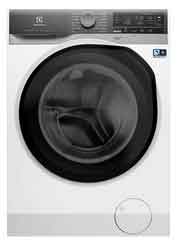
As the name implies, this type combines a front loading washer and dryer into one unit; no more stacking and no more hassle of manually transferring your clothes. These models are typically the flagship model of a brand’s washing machine line, so expect the latest tech to come with it.
Since you can wash and dry in the same tub, you don’t have to transfer between washes anymore. It also dries clothes completely as it uses electric heating to dry your clothes.
These models tend to be the most technologically-advanced in the washing machine lineup. Some models are even WiFi-enabled, so you can control your washing machine from your phone wherever you are.
With that said, they come at a hefty price; operating the electric dryer is expensive as well.
Pros:
- Less water consumption
- Space saving
- Convenient
- Dries clothes completely
- Top-of-the-line
Cons:
- Extremely expensive
- Expensive to operate
- Heavy; no easy relocation
- You must have high water pressure in your area
Other factors and features to consider
- Water pressure in your area. If it’s inconsistent at best, some fully automatic washing machines may not be able to operate properly in your area. Otherwise, you may need to fill your washer manually.
- Where are you going to put it? Corrosion is a common problem of washing machines. If you have a dedicated wash area in your home, then you won’t have any problems. If you are going to place it outside though, a plastic-bodied model can be the better choice, as they are rust-proof. Most metal-bodied models have corrosion protection though – just be careful not to scratch or pierce the body!
- Rat-proofing. These pesky critters can climb inside an unprotected washing machine and chew through the electronics. Most brands have a plastic panel below or at the rear of the unit to protect against them. You better check though.
- Anti-allergen mode. If you have an infant or someone with a compromised immune system, this could be an added protection for them.
- Drum Clean Function. The interior of the washing machine is a cold, damp, and dark place – perfect for molds. If enough molds have built-up in your washing tub, it could result in a smelly batch of laundry. Most manufacturers of fully autos have a program that rinses the exterior part of the tub to keep molds at bay.
- Separate Dryer. If your unit does not have a built-in dryer, you should consider getting a separate dryer for more convenience. Some washer models have a stackable dryer counterpart, but some dryer models are also sold ala-carte. There are three types of dryers:
Types of Dryers
If you want to find out which are the best washing machine models with built-in dryers or the best standalone dryer model, check out the articles I’ve written here.
Spin Dryer

This is just a twin tub’s dryer bought ala-carte. Spin drying can only get so much of the water out of your clothes, but it can’t dry them off completely. It will reduce the overall time of drying, but you can’t use your clothes right off the bat as they can still be damp.
Electric Dryer
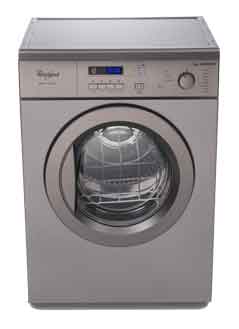
This is the partner of the front load washer. Most are stackable, some are not. They are also cheaper compared to the next type in this list. However, they can be expensive to operate. Also, make sure that the washer and the electric dryer will not be plugged in to the same circuit as it can be a fire hazard.
Gas Dryer
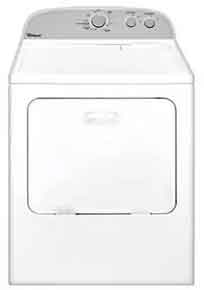
While the electric dryer uses an electric-powered heating element to dry your clothes, this type uses gas instead. The initial cost is substantially more expensive, but the operational cost will be lower as the cost of gas is typically cheaper than electricity. Professional installation is a must to ensure your family’s safety.
Conclusion
Are you ready to buy a new washing machine now? I hope that this washing machine buyers guide has served you well.
Now that you know what to look for in a washer, you can now narrow down your choices to make the whole decision-making process easier.
References
- Woodford, C. (2020, August 17). Inverters. Explain That Stuff. https://www.explainthatstuff.com/how-inverters-work.html

Miguel Mores worked for 5 years as a member of the product management team for a home appliance company in the Philippines. He started 101appliance to answer the most common customer questions that he has encountered during his time in the industry. He now works in the digital marketing field and manages a small online bookstore on the side.

